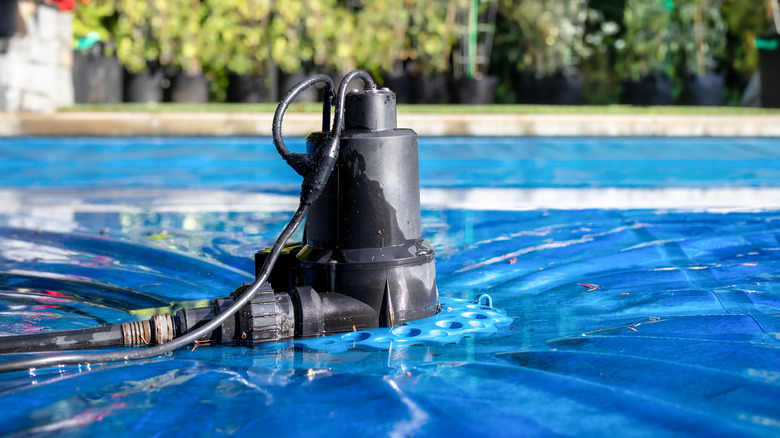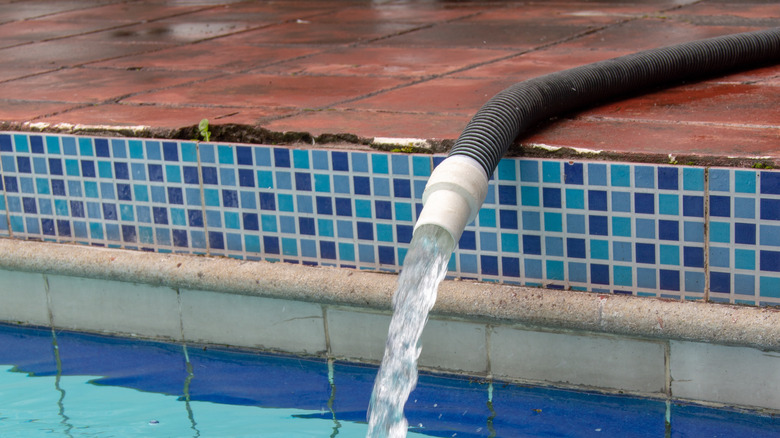How To Use A Hose To Heat Up Your Pool Naturally
We may receive a commission on purchases made from links.
The temperatures can be unpredictable as summer draws to a close. While you still want to get in the pool, you might find the water just a tad chilly for a long soak. The good news is there's no need to waste a bucket load of money and time installing a fancy pool heater. Here's a handy, affordable tip for pool owners this summer: connect a garden hose of black plastic left out in the sun to a pump and run your pool water through it.
This simple trick is all thanks to solar thermal energy. "Solar thermal generates energy indirectly by harnessing radiant energy from the sun to heat fluid," shares Elizabeth Bullock, an expert in geothermal energy and geophysics, via Student Energy. Like a camping or outdoor solar shower, the black material the hose is made of attracts and absorbs solar energy. This energy, in turn, warms both the hose and the water traveling through it. As the cold water in the pool is replaced by warm water from the hose, the overall temperature of the water in the swimming pool gradually rises.
Source your materials
How hot the water gets depends on various factors, including how wide your hose is, the material your hose is made of, how powerful the pump is, how long you run the pump, the amount of direct sunlight, the starting temperature of the water, and the ambient outdoor temperature. For example, if you experience scattered showers throughout the day, a hose is unlikely to absorb enough solar radiation to warm the water, no matter how long you leave it outside.
Start with the right hose at the right length. Aim for 50% of the square footage of your swimming pool at minimum or at least 200 feet of hose for a moderate to large-sized pool. Whether for irrigation or watering your garden, most hoses are made from polyurethane or rubber. Get the darkest color you can find — ideally, a solid black. Something like this Raindrip half-inch irrigation tubing for $27.99 from True Value would work well. Next, you'll need a pool pump. You can get a submersible pump like this Lanchez brand machine on Amazon for under $100. A timer, solar blanket, and pool thermometer are optional but helpful.
Turn on your new water heater
Now that you have your equipment sorted, you need to wait for a super sunny day to test it. With one end of the hose connected to your pump (use a simple hose clamp), coil the rest into a large, solid disc lying flat on the ground. Lawn turf works, but taking advantage of a heat-absorbing surface like asphalt, natural stone, or patio pavers is even better. Secure the coil with long zip ties so it doesn't unravel. You can also build a platform for the coiled hose from plywood painted black. Let the hose disc heat for a few hours in the midday sun. It should be difficult, if not impossible, to touch it once it's hot enough — be careful if handling it.
Once the hose is scorching, place the end not connected to the pump into the swimming pool and turn it on. If you purchased a timer, set it to run the pump at predetermined intervals — continuously during the hottest part of the day and off overnight. You can also cover the coiled hose with a solar blanket overnight to retain heat collected during the day. You can expect water temperatures of around 85 degrees Fahrenheit.


